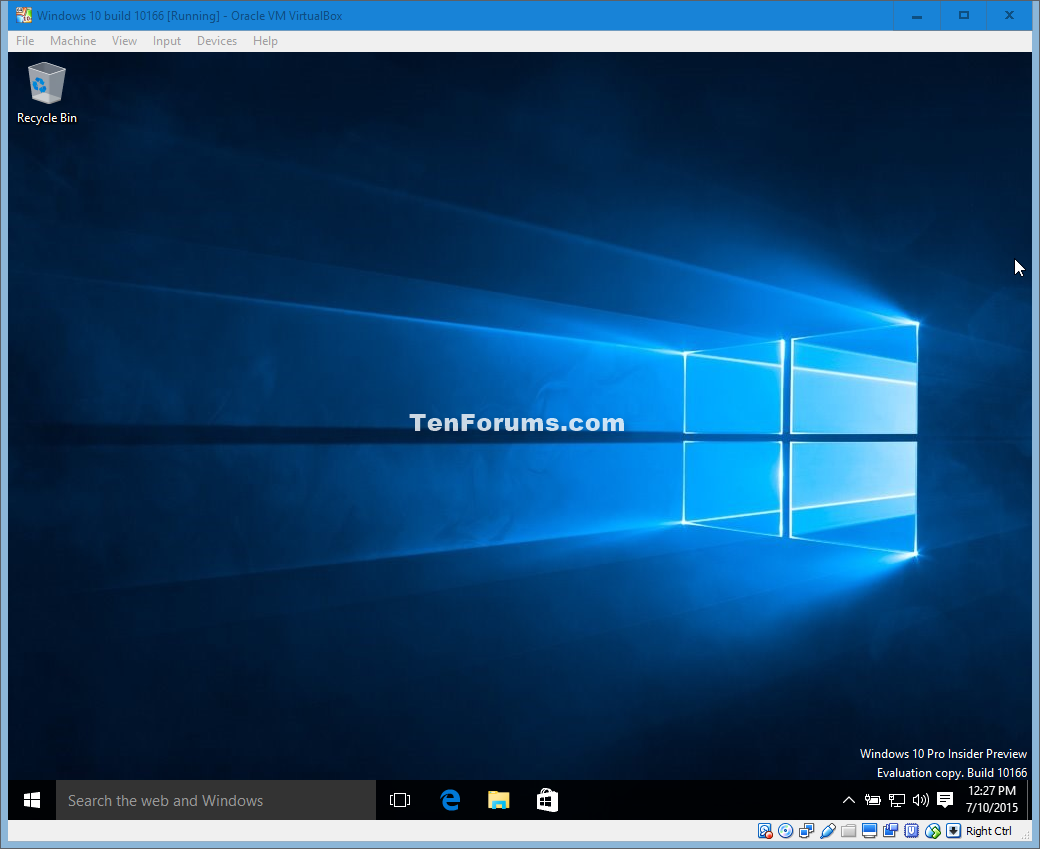Virtualbox guest complains system is only 32 bit. Log in to get rid of this advertisement I'm trying to use VirtualBox on a 64 bit host (Fedora 12), and install a 64 bit suse guest. I have VirtualBox installed just fine on the host, but when I try to launch the guest (booting from an iso) I get the message 'This is a 32-bit computer.
I experienced an extremely nettlesome problem after swapping out my traditional hard drive for a fasterSolid State Drive (SSD). I installed Windows 8.1 from scratch using the Product Key, copied over all my software (I probably should have used Ninite but I was too lazy) and then mindlessly enabled a bunch of options that I never enabled before.
But Alas! Stupidity has a cost and in my case it cost hours of discomfiting nights scouring Google for a solution.
After deleting the VM, and trying to re-add it, I was greeted with another issue. Even though I’m running a 64-bit OS (Windows 10), and have a 64-bit CPU architecture, I couldn’t create a 64-bit VM. I could only select a 32-bit option from the dropdown menu. Now not only will my VMs not boot, I can’t even select a 64-bit version. VirtualBox on Windows only supports one architecture x86, it does not matter if VirtualBox is a 32-bit or 64-bit process, the author's problem is connected to virtualization technology (VT-x) not being available to VirtualBox. The author indicated, in their question, they were running a 64-bit version of Windows 10.
Today I want to save you the pain I encountered by showing you how to fix a problem I experienced in VirtualBox. This post is going to be succinct and to the point.
When trying to create a Virtualbox VM recently I was only presented with the option of creating a 32-bit client. After a bit of research it turns out this can be caused by incorrect settings in the BIOS or by a competing Virtual Machine software cohabiting the system. First of all your CPU must support the virtualization extensions. Virtualbox 32 bit DownloadOldBuilds52 - Oracle VM VirtualBox. Project site Download VirtualBox 4.3.10 If VirtualBox is only showing 32 bit versions in the Version list make sure: Your Host OS is 64-bits.
Even though my Host OS is a 64-bit version of Windows 8.1, VirtualBox categorically refused to display any 64-bit guest OSes in the Create Virtual Machine dialog box.
This was super annoying because all my ISOs were 64-bit therefore I couldn’t use them until I fixed this problem.
Uninstalling and reinstalling VirtualBox made no observable difference so I booted into the BIOS to see what I could find there.
I have a Lenovo ThinkPad W520. As a side note, a few months ago I made another idiotic mistake: I enabled a bunch of BIOS passwords to make myself feel secure but then forgot how to disable them!
Thank God I didn’t enable a Supervisor Password or else I would have to replace the system board. That’s seriously the only way to get around that one; resetting the CMOS won’t fix a forgotten Supervisor password. Thankfully, I remembered, the Hard Drive password and the Power-On Password, so after surmounting those obstacles, I removed those passwords and tried to see if there was anything I could enable to make VirtualBox display 64-bit Guest OS versions.
In the Security Section, I noticed an option called Virtualization.
Filled with a bracing hope, I tabbed over and hit enter but then noticed all relevant settings were already enabled!
Intel (R) Virtualization Technology was enabled and Intel (R) VT-d Feature was also enabled. These were two key options that VirtualBox was expecting. But since both were already enabled I was utterly flumoxed.
Do I need to toggle the values? In other words, do I need to disable both options, save changes, reboot, and then enable them again?
I couldn’t figure it out so I decided to poke around the administrator options in Windows to see what I could find.
I wanted to see what administrative Windows features were enabled – perhaps something was conflicting with the visualization settings in the BIOS?
I quickly pressed Windows Key + q to open the Search box and typed in:
I scanned a few options but one in particular was salient:
Hyper-V was enabled.
Virtualbox Only Showing 32-bit
In Windows 8.1 Hyper-V is the successor to Microsoft Virtual PC. It’s the native virtualization component that is available to all Windows 8.1 users.
It was enabled though…
Interesting. Could this be conflicting with the Intel settings in my BIOS? I decided to uncheck the option to see.
Windows quickly displayed a progress bar denoting the removal of the Hyper-V platform and after about a minute prompted me to reboot.
When my system came back up, I swiftly logged back into the Windows, kicked open VirtualBox and checked the versions list:
Yes yes yes!!!!
I couldn’t have been more elated – something like this might seem trivial to some people but it was really worrying me. Because it used to work before I upgraded my hard drive. It turns out, upgrading my hard drive wasn’t even remotely causally related to my problem.
I think I literally pumped my fists in the air when I saw this screen.
The Bottom Line

If VirtualBox is only showing 32 bit versions in the Version list make sure:
- Your Host OS is 64-bits
- Intel Virtualization Technology and VT-d are both enabled in the BIOS
- The Hyper-V platform is disabled in your Windows Feature list.
I hope this helps you – I don’t know if my situation will apply to your system configuration but I wanted to share. Hopefully this little article will spare you the hours of mind numbing frustration that besieged me for the last few weeks.
Oracle Virtualbox Only Showing 32 Bit Windows 10
Source: http://www.fixedbyvonnie.com/2014/11/virtualbox-showing-32-bit-guest-versions-64-bit-host-os/#.WBMy_MOKTRY